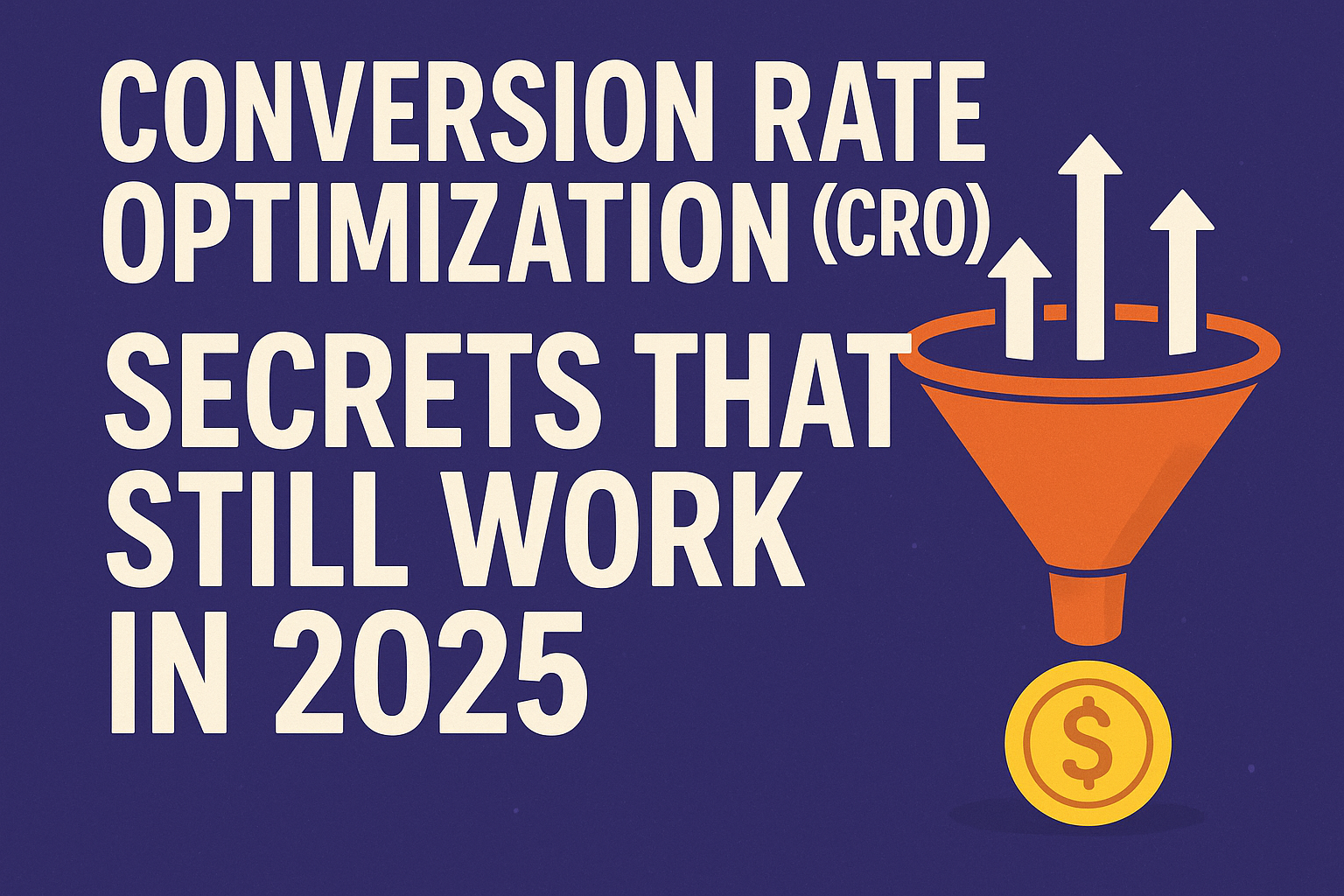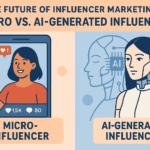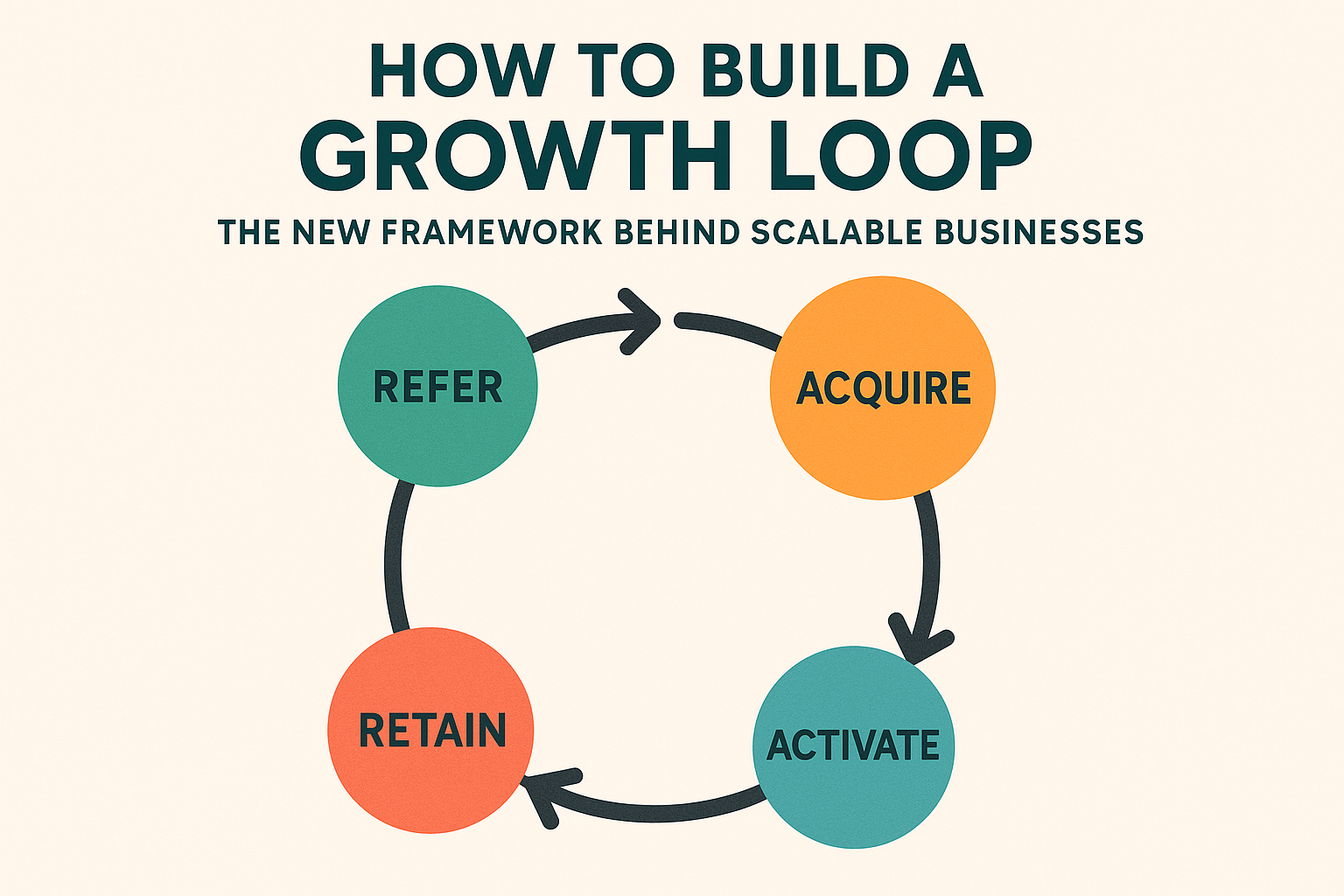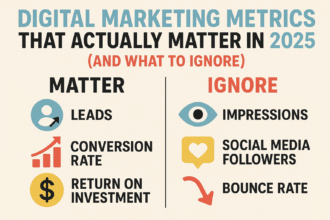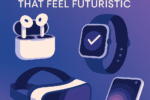The Unchanging Truths of CRO in a Changing World
In the relentless churn of digital marketing, where algorithms shift overnight and consumer behaviors evolve at lightning speed, one discipline remains the bedrock of sustainable online growth: Conversion Rate Optimization (CRO). While the tools and tactics may be refined, the fundamental principles of understanding human psychology, removing friction, and delivering undeniable value are timeless. As we move deeper into 2025, the landscape is not defined by a single, magical “secret” but by a sophisticated synthesis of data, technology, and profound customer empathy. This comprehensive guide strips away the fluff and hyperbole to reveal the core CRO secrets that have not only endured but have become more critical than ever. We will move beyond basic button-color tests to explore the strategic, technical, and psychological levers that truly move the needle, transforming casual browsers into loyal customers and maximizing the lifetime value of every visitor.
What is Conversion Rate Optimization (CRO)? Beyond the Basic Definition
At its simplest, Conversion Rate Optimization is the systematic process of increasing the percentage of website visitors who complete a desired action. This action—a conversion—can be a purchase, a form submission, a newsletter sign-up, or any other key performance indicator.
However, the 2025 definition is far more nuanced. Modern CRO is not merely a tactical checklist; it is a strategic framework for business growth. It’s a continuous cycle of understanding user intent through qualitative and quantitative data, forming data-driven hypotheses, implementing changes, and rigorously analyzing the results. The ultimate goal is to create a seamless, persuasive, and valuable user experience that aligns perfectly with both business objectives and user needs. In an era of increased privacy regulations and the phasing out of third-party cookies, first-party data gathered through thoughtful CRO practices has become a priceless competitive asset.
The Core Pillars of Modern CRO: A 2025 Framework
The secrets to success in 2025 are built upon four interconnected pillars. Ignoring any one of them will result in suboptimal outcomes and wasted resources.
1. Data-Driven Decision Making: The End of Guesswork
The era of optimizing based on hunches is long gone. Today’s winning strategies are built on a foundation of robust data analysis.
- Quantitative Data (The “What”): This is the numerical evidence of user behavior. Tools like Google Analytics 4 (GA4), Hotjar, and Microsoft Clarity provide insights into metrics like bounce rate, session duration, exit pages, and conversion funnels. They show you what is happening—for instance, that 75% of users abandon their cart on the shipping information page.
- Qualitative Data (The “Why”): This is where you uncover the motivations behind the numbers. Tools like session recordings, heatmaps, and on-site surveys (e.g., from Hotjar or Qualaroo) allow you to see how users interact with your site. Why are they leaving the shipping page? Is the form too long? Are unexpected costs presented too late? Voice-of-customer (VOC) data from surveys and customer support logs is pure gold for hypothesis generation.
- Statistical Significance: In 2025, no change should be made permanent without a clear winner from an A/B or multivariate test. Platforms like Optimizely, VWO, and even Google Optimize ensure that your results are statistically sound and not just random fluctuations.
2. Radical User-Centricity and Personalization
Treating all users the same is a conversion killer. The secret lies in delivering a relevant experience to different segments.
- Audience Segmentation: Divide your audience based on demographics, source (e.g., organic search vs. paid social), behavior (first-time visitor vs. returning customer), or device type. A visitor arriving from a Pinterest ad may have different intent than one from a Google search for a specific product model.
- Dynamic Personalization: Use tools to personalize content in real-time. This can be as simple as displaying a different hero message to returning users (“Welcome back!”) or as complex as showcasing products based on past browsing history. A 2025 study by McKinsey found that 78% of consumers are more likely to make a repeat purchase from a brand that personalizes their experience.
3. Psychological Persuasion: The Hidden Triggers
Understanding the cognitive biases and psychological principles that influence decision-making is a powerful, often underutilized, CRO secret.
- Social Proof: In a world of infinite choice, we look to others for guidance. Displaying customer testimonials, user reviews, trust badges, client logos, and real-time purchase notifications (“Jane from New York just bought this…”) reduces perceived risk and builds trust.
- Scarcity and Urgency: These principles leverage the fear of missing out (FOMO). However, the key in 2025 is authenticity. “Only 2 left in stock!” is genuinely persuasive. A fake countdown timer that resets every hour is not only easily spotted but can erode trust. Use these tactics truthfully.
- Authority: Showcasing expertise, certifications, awards, and media features positions your brand as a leader and makes your offers more compelling.
4. Technical Excellence and Core Web Vitals
You can have the most persuasive copy and beautiful design, but if your site is slow or broken, you will not convert. Google’s Core Web Vitals are now a direct ranking factor and a major conversion factor.
- Loading Performance (LCP – Largest Contentful Paint): Your pages must load quickly. A 1-second delay in load time can lead to a 7% reduction in conversions. Optimize images, leverage browser caching, and minimize JavaScript.
- Interactivity (FID – First Input Delay / INP – Interaction to Next Paint): Users must be able to interact with your page (click, scroll, type) without lag. This is crucial for form completion and navigation.
- Visual Stability (CLS – Cumulative Layout Shift): Nothing frustrates a user more than trying to click a button only for an image to load and push it down the page. A low CLS is essential for a professional, trustworthy experience.
Actionable CRO Secrets and Strategies for 2025
Now, let’s translate these pillars into specific, actionable strategies you can implement.
Secret #1: Master the “Micro-YES” Ladder and Progressive Disclosure
Don’t ask for a big commitment (like a sale or a long form fill) upfront. Instead, guide users down a path of small, easy “yes” decisions.
- How it works: A visitor might first be asked to click a clearly labeled button (“See Our Pricing”). Then, they are shown a simple form asking for just their email to receive a detailed quote. Finally, after receiving value, they are more primed for a sales conversation. Each step is a low-friction commitment that builds towards the macro-conversion.
- Progressive Disclosure: Only show users the information they need at that exact moment. On a product page, start with the core benefits and stunning imagery. Have clear tabs or expandable sections for “Specifications,” “Shipping Details,” and “Reviews.” This prevents cognitive overload and keeps the focus on the primary action: Add to Cart.
Secret #2: Hyper-Optimize for Mobile-First (and Mobile-Only)
With over 60% of global web traffic coming from mobile devices, a “mobile-friendly” site is no longer enough. You need a “mobile-first” CRO strategy.
- Thumb-Friendly Design: Place key clickable elements (buttons, navigation menus) within the natural thumb zone for easy one-handed use.
- Simplify Forms: Use dropdowns, checkboxes, and pre-filled fields (where possible) to minimize typing. Implement digital wallet options like Apple Pay and Google Pay to reduce friction at checkout to a single tap.
- Speed is Everything: Compress images, use next-gen formats (WebP), and eliminate render-blocking resources. Mobile users are often on-the-go and have less patience for slow loads.
Secret #3: Leverage Social Proof with Authenticity and Specificity
Generic “Great product!” testimonials are weak. The most powerful social proof is specific, authentic, and visual.
- Use Customer Photos and Videos: A video testimonial is exponentially more powerful than text. User-generated content (UGC) from social media is incredibly effective.
- Be Specific: Instead of “Increased our revenue,” use “Helped us increase qualified leads by 27% in one quarter.” Specificity adds credibility.
- Show, Don’t Just Tell: Display real-time activity feeds or recent purchase pop-ups. Tools like Proof or Nudgely can integrate this seamlessly.
Secret #4: Implement Strategic Fear-of-Missing-Out (FOMO)
As mentioned, the key is authenticity. Here’s how to do it right:
- Low Stock Indicators: If you have an inventory management system, integrate it to show real-time stock levels. “Only 3 left!” is a powerful motivator.
- Real-Time Demand: Show how many people are viewing a product right now. (“24 people are looking at this item”).
- Time-Sensitive Offers: Run legitimate flash sales with a clear countdown. For evergreen content, you can use context-specific urgency, like “Offer expires in 2 hours” for a user who has had a cart abandoned for a day.
Secret #5: Build Unshakable Trust with Security and Transparency
In 2025, data privacy and security are paramount conversion factors.
- Security Badges: Display SSL/TLS badges (the padlock icon in the address bar), McAfee Secure, or BBB accreditation logos, especially on checkout pages.
- Clear Return Policies: Have a generous, clear, and easy-to-find return policy. A hassle-free return policy reduces the perceived risk of purchasing.
- Transparent Pricing: 48% of cart abandonments are due to extra costs like shipping, taxes, and fees being too high or presented too late. Be upfront with all costs as early as possible. Use a shipping calculator on the cart page, not the checkout page.
Case Study: How Backcountry.com Increased Conversions by 13% with Personalization
Outdoor retailer Backcountry.com implemented a sophisticated personalization engine that segmented users based on their activity.
- The Problem: They wanted to reduce bounce rates and increase engagement from users arriving from broad-based marketing campaigns.
- The Hypothesis: By showing these users content and products tailored to their inferred interests, they could increase relevance and conversion likelihood.
- The Action: They deployed a tool that analyzed a user’s first few clicks and scrolls. If a user lingered on ski gear, the site’s hero image and promotions would dynamically change to feature ski jackets, goggles, and relevant seasonal sales.
- The Result: This real-time personalization strategy led to a 13% increase in conversion rate and a significant boost in average order value for the targeted segments. The secret wasn’t a single button change, but a systemic shift towards a more intelligent, user-centric experience.
Advanced Technical CRO Fixes for 2025
- Address INP (Interaction to Next Paint): This newer Core Web Vital metric measures a page’s overall responsiveness. To improve it, break up long JavaScript tasks, optimize event handlers, and use a web worker for complex calculations. A fast-rendering, responsive site directly correlates to higher user engagement and conversions.
- Structured Data Markup: Implement schema.org markup (JSON-LD) on your product pages, articles, and FAQs. This helps search engines understand your content, leading to richer search results (rich snippets, star ratings), which can significantly improve your click-through rate from search—the first step in the conversion journey.
- 404 Page Optimization: A dead end is a conversion killer. Turn your 404 error page into a helpful resource. Include a search bar, popular product links, and a charming message to keep users engaged and guide them back into the conversion funnel.
The Eternal Secret of CRO
The most important Conversion Rate Optimization secret that will forever remain true is this: CRO is not a project; it is a culture. It is a commitment to perpetual learning, testing, and customer understanding. The tactics we’ve outlined—from leveraging psychological triggers to mastering technical performance—are the tools of the trade. But the strategy is a mindset of empathy and curiosity.
The brands that will win in 2025 and beyond are those that listen intently to their customers through data, respond with relevant and valuable experiences, and never stop striving to remove friction and build trust. There is no finish line. Your website is a living, breathing entity that must evolve with your audience. Start with one hypothesis, run one test, learn from the results, and repeat. That continuous cycle of improvement is the ultimate secret to unlocking sustainable growth.
Ready to transform your website’s performance? Begin your CRO journey today by auditing your site with a tool like Hotjar or Microsoft Clarity. Identify one key point of friction, form a hypothesis, and design an A/B test. The first step towards a higher conversion rate is simply to start.
Frequently Asked Questions (FAQ)
Q1: What is the most important metric in CRO besides conversion rate?
While the conversion rate is crucial, Conversion Value per Visitor or Average Order Value (AOV) is often more important for overall revenue. Additionally, micro-conversion rates (like email sign-ups or add-to-carts) and funnel drop-off rates provide deeper diagnostic insights into where your experience is failing.
Q2: How long should I run an A/B test for?
You should run a test until you reach statistical significance (typically 95% confidence or higher), not for a predetermined time frame. This can take anywhere from a few days to several weeks, depending on your website traffic and the magnitude of the difference between variations. Running a test for less than one full business cycle (7 days) is generally discouraged to account for weekly trends.
Q3: What’s the difference between A/B testing and multivariate testing?
An A/B test (or A/B/n test) compares two or more entirely different versions of a page (e.g., a red button vs. a green button). A multivariate test (MVT) tests multiple variations of multiple elements on a single page simultaneously (e.g., testing a combination of different headlines and different images). MVTs require significantly more traffic to achieve statistical significance.
Q4: How can I generate good CRO hypotheses?
The best hypotheses come from a mix of data sources:
- Analytics: Identify pages with high exit or bounce rates.
- Session Recordings/Heatmaps: Watch how users behave on those pages. Where do they click? Where do they get stuck?
- Surveys: Ask users directly why they didn’t convert or what they found difficult.
- Customer Support Logs: Look for common complaints or questions.
A good hypothesis follows the format: “Because we saw [data observation], we believe that [making this change] will result in [this outcome].”
Q5: Is CRO still relevant with the rise of AI and chatbots?
Absolutely. In fact, AI supercharges CRO. AI-powered chatbots can qualify leads and answer questions 24/7, reducing friction and capturing conversions. Machine learning algorithms can analyze vast datasets to predict user behavior and personalize experiences at an individual level, far beyond manual segmentation. CRO in 2025 is increasingly powered by AI, making it more relevant and effective than ever.
